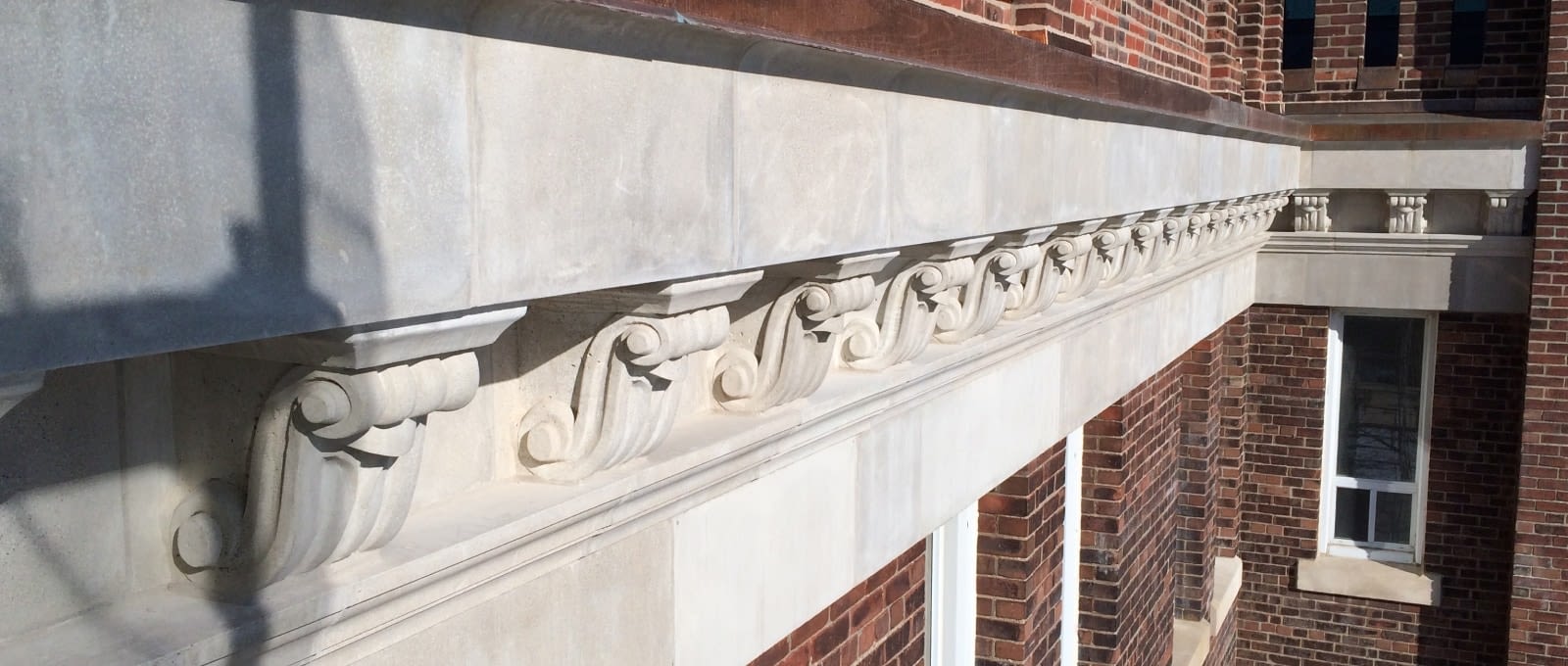Cleaning masonry can refresh a heritage building’s appearance, but despite the benefits, it’s not always recommended. As with any historic masonry restoration job, you need to understand the right materials and the right techniques to preserve the integrity of the structure.
Historic Masonry Restoration: Masonry Cleaning
Masonry restoration projects often involve masonry cleaning. Cleaning masonry can have a dramatic impact on a building’s exterior appearance. Like many other aspects of historical building restoration, however, it’s critical to determine the correct approach, otherwise you can damage the building’s exterior, and structural integrity.
Roof Tile Management experts can help assess damage to your heritage building’s exterior, and provide advice on masonry restoration and cleaning.
Start by Agreeing on Desired Results
While masonry cleaning can improve the look of the building, it’s important to begin the project with an understanding of how much improvement can – and should – actually be made. As a first step, masonry restoration and cleaning experts typically begin with a test area. This helps determine the exact type of masonry material and the cause of the discoloration.
It may not be possible, practical, or even desirable to restore the building to a “like new” appearance. After all, one of the many charms of a historical structure is the sense of age. When stone or brick is cleaned too much, it diminishes the sense of time and history the building embodies.
Determine the type of material and cause of the discoloration
While this may seem obvious – after all, it’s stone or brick and dirt – the type of masonry and type of “dirt” or discoloration informs the best method for cleaning.
Certain types of stone, sandstone or limestone for instance, can easily be mistaken for each other, and require dramatically different cleaning techniques. Results can be disastrous if the material is not correctly identified at the outset of the job.
Multiple factors contribute to discoloration of a building’s exterior. Most commonly it is dirt and dust kicked up from the roads and soil surrounding the structure, or debris dropped from nearby trees. Soot and smog from air pollution and moss/algae growth are also common culprits. Material leaching out of the stone can also cause discoloration.
On many jobs, it is a combination of several of those factors.
Historical masonry restoration experts have the experience to determine both the type of material, and cause of the staining. They can then recommend the best treatment options.
Masonry Restoration: Cleaning Options
There are a number of cleaning options available. When determining the desired treatment during a masonry restoration and cleaning, you should also consider the environmental impact of the cleaning process.
There are four main cleaning methods:
- Water-based cleaning – from gentle rain-like water cleaning, power washing, washing with detergents, or steam cleaning, water is a tried-and-true method to remove dirt from masonry. Water alone will not remove paint or graffiti.
Potential hazards: power washing at too high a pressure can wear away brick and mortar. Using water to clean badly-deteriorated brick may cause further damage to the historic masonry. Cleaning with water in colder temperatures can cause the water to freeze and expand, damaging the brick/stone and mortar.
- Chemical-based cleaners – special chemicals are often used to remove paint and graffiti from masonry. Understanding the masonry material is critical when using chemical cleaners. Use acid-based cleaners for unpolished granite, slate, unglazed brick and terra cotta, cast stone, concrete and most sandstone. Use alkali-based cleaners on acid-sensitive material like limestone, marble, material with glazes and polished granite.
Potential hazards: pairing the wrong chemical will damage the brick or stone. Chemicals have a harsher environmental impact than water and can be hazardous to use. Any cleaning chemicals used during masonry restoration and cleaning should be handled carefully and disposed of appropriately. Like water, chemicals can freeze in cold weather, damaging the stone, brick or mortar, so cleaning should be avoided during cold weather.
- Abrasive cleaning – abrasive cleaning with sand blasters or grinders is generally not recommended for heritage buildings. In addition to removing dirt or paint, abrasive cleaning can wear down the masonry surface and mortar. Therefore, abrasive cleaning should be employed only with extreme caution.
Potential hazards: wearing down the masonry or mortar, changing the appearance or damaging the integrity of the historic building.
- Poultices – a poultice is a soft paste made of a wet, absorbent material like clay powder or even shredded paper, mixed with a cleaner. Poultices can be very effective in removing graffiti. The poultice is applied to the stained area, and as it dries, it draws the stain out of the masonry. The area must be rinsed thoroughly once the process is complete.
Potential hazards: poultices should not be used in cold weather as they contain water or liquid chemicals. Poultices also contain cleaning chemicals, many of which can be harmful to the environment, although potentially less harmful than using chemical cleaners directly over a large area.
Like any aspect of heritage building restoration, masonry cleaning can be complex work. At RTM roofing, we specialize in heritage building restoration. If you are looking for experts in masonry restoration, masonry cleaning, building restoration or roof restoration services, contact our team at Roof Tile Management.
References:
BuildingConservation.com
https://www.buildingconservation.com/articles/masonry-cleaning/masonry_cleaning.htm
Region of Waterloo: Masonry Practical Conservation Guide for Heritage Properties
https://www.regionofwaterloo.ca/en/exploring-the-region/resources/Documents/PracticalGuideMasonry-access.pdf

